Sony EchoScapes
Connecting loved ones through immersive soundscapes.
*Achievements - Patent filed alongside Sony Electronics
Role
Interaction Designer, Researcher
Timeline
Jan - Jun 2023 (6 months)
Team
Vanessa Chien Lai, Kara Bates, Priyana Patel
Tools Used
Figma, Miro, Google Suite, Adobe Suite
Project Overview
With the rise of remote work in a post-pandemic world, social connections have become heavily informed by our digital environments, engendering negative relationships with technology and leaving people feeling more isolated. Studies have shown that the rapid and forced adaptation triggered by COVID-19 increased our reliance on technology, further blurring the line between online and offline.
This is a Capstone project from the Master's program at University of Washington. My team was sponsored by Sony Electronics to reimagine how their home entertainment technology could be used for wellness.
How might we increase social wellness with friends and family in distant environments within the home?
We created EchoScapes, an immersive experience to connect distant love ones through a system of ever-changing sounds, visuals, and lighting. It aims to promote social wellness through sharing one's real-time location's experience with others.
My Role
As the interaction designer, I led ideation, created user flows and storyboards, conducted concept testing, and designed the Wizard-of-Oz experience, device interaction, and app interface. Additionally, I was involved in every step of the research process in collaborating on focus groups, diary study, and synthesis.
Understanding the User
The UX team at Sony Electronics suggested their target demographic as older Generation Z and young Millennial customers (birth years 1988-1998) in their wellness journeys, leveraging their high technological literacy and purchasing power.
To better understand the wellness space, literature reviews, discussion about wellness, and a survey were used. I was responsible for literature reviews and leading a wellness discussion.
Research Questions
Understanding Wellness
1. What are the various dimensions of wellness?
2. What does wellness mean to our target demographic (Millennials, older Gen Z, and people with disposable income)?
3. What are the primary wellness concerns of our target demographic?
2. What does wellness mean to our target demographic (Millennials, older Gen Z, and people with disposable income)?
3. What are the primary wellness concerns of our target demographic?
Technology and Wellness
4. How can technology, specifically home entertainment devices, play a role in an individual’s wellbeing and health?
5. How does our target demographic use technology to advance their wellness?
6. How can technology be harmful to our target demographic’s wellness?
4. How can technology, specifically home entertainment devices, play a role in an individual’s wellbeing and health?
5. How does our target demographic use technology to advance their wellness?
6. How can technology be harmful to our target demographic’s wellness?
Defining Wellness
Wellness is a broad and personal topic for many, making a universal definition that is inclusive of the priorities of all individuals difficult to find. Based on literature review, wellness is a holistic pursuit that can integrate many parts of an individual's life, from the physical and mental aspects, to social aspects, and more. These aspects are highly interdependent and entangled, which initially made it difficult to structure our research.
Through brainstorming and literature review, our team defined wellness to encompass five different dimensions—physical, mental, intellectual, social, and financial to serve as the backbone for all research and design processes. We continued to develop our definition of wellness alongside participants and identified which dimensions were most important to them.
Research Methods
21 Literature Reviews
58 Survey Respondents
3 Focus Groups (12 Participants)
1 Week Diary Study (8 Participants)
Key Insights
Wellness dimensions are inextricably linked
Various participants valued certain wellness dimensions not on their traditional definitions, but on their potential to affect other areas of wellness.
Technology is a double-edged sword.
Throughout our Diary Study, participants often cited the effects of technology being dependent on other factors—lifestyle, mood, situation, and more.
People value
social connection.
Our participants often linked social connection with improved mental or physical health.
Our participants often linked social connection with improved mental or physical health.
Design Principles
Empowering
Users should have self-efficacy in achieving or continuing to achieve their wellness goals. Our designs should encourage users to feel motivated and confident in their wellness journey, empowering them to take control of their health and well-being.
Non-Intrusive
Users should not feel impeded while using our designs. Our designs should neither overwhelm users nor add to the abundance of technology distractions.
Approachable
Users should feel supported in any and all ways of their wellness journey. Our designs should create a safe, supportive, and non-judgmental environment to make users feel comfortable with achieving their wellness goals.
Trustworthy and Transparent
Users should have agency over how their choices are shared. We want users to feel a sense of transparency in what information is used, with clear ways to control it.
Ideation
Ideation was all about divergence, generating as many ideas as possible, and eventually convergence, narrowing the scope of our ideas once we gained more information about features people liked.
Vision Boarding
We each individually put together a vision board of possible solutions based on the findings and areas of opportunities we identified at the end of our research. This process helped us flesh out all of our initial thoughts and ideas.
Crazy 8s Workshop
After affinity mapping our ideas, Each team member generated eight unique design ideas during a single ideation session for a total of 32 possible solutions, which were affinity mapped into 13 categories.
Prioritization Grid
Because we had so many ideas, we referenced IBM’s prioritization grid to help us choose our concept based on feasibility and value.
I honed in on “Big Bets” section of the matrix, which reflects significant investments of high impact & payout, so we decided to pursue the “Immersive Soundscapes/Experiences” concept.
Preliminary Wireframes
I developed wireframes for specific features that our immersive experience would have, such as a Library to save soundscapes, Onboarding to help new users, Scheduling to play soundscapes at a specific time, and Modes for different use cases.
After receiving feedback from Sony, they wanted us to focus more on the concept, story, and impact our product would have on people rather than specific features.
After receiving feedback from Sony, they wanted us to focus more on the concept, story, and impact our product would have on people rather than specific features.
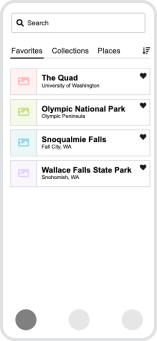
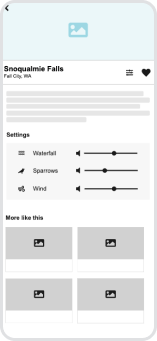
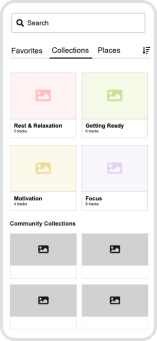
Co-Design
Once we had established a problem space and general idea, I planned a Co-Design activity to further narrow our scope and get input from participants with various living environments. We recruited 6 participants with diverse living spaces and cohabitation situations.
The goals were to:
1. Understand various households & living situations and how Sony home entertainment technology can be incorporated
2. Identify key features that users would want in the design solution
3. Learn about how users would interact with our solution in their own home environment and subsequently identify potential challenges and considerations
1. Understand various households & living situations and how Sony home entertainment technology can be incorporated
2. Identify key features that users would want in the design solution
3. Learn about how users would interact with our solution in their own home environment and subsequently identify potential challenges and considerations
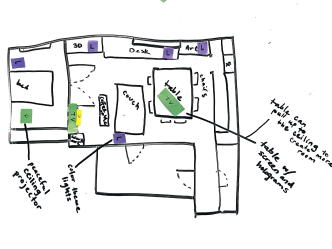
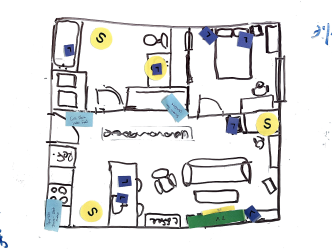

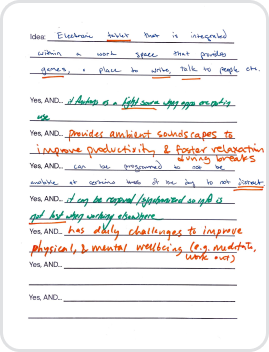
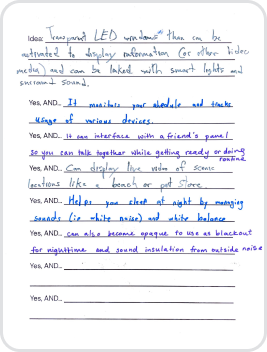

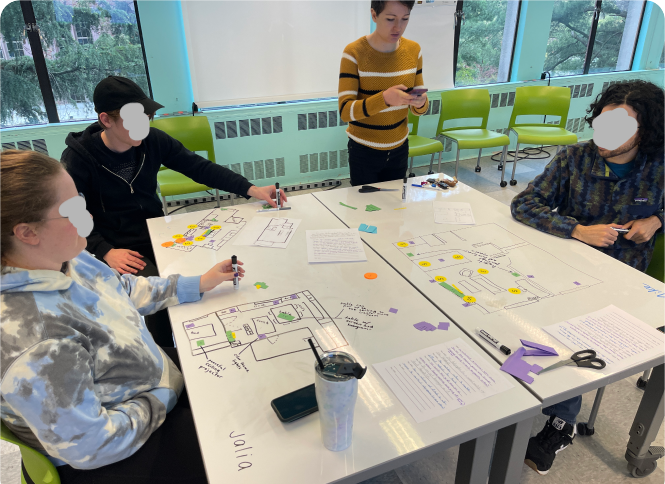
Crafting the Concept
Sketches and Storyboards
The foundational concept seen in our storyboard tells the story of someone turning on their home entertainment system and being transported to a completely different place. In this case, it's a natural environment where they can hear various sounds as they move throughout their home.
Concept Development
Because our idea was situated in a living space and would take time to prototype, I decided that it was more efficient to refine our concept and features through additional storyboards and telling participants to imagine our experience through a story to which they could relate. I tested our concept with 6 participants, resulting in updated storyboards that included new features such as social connection and additional devices/locations.
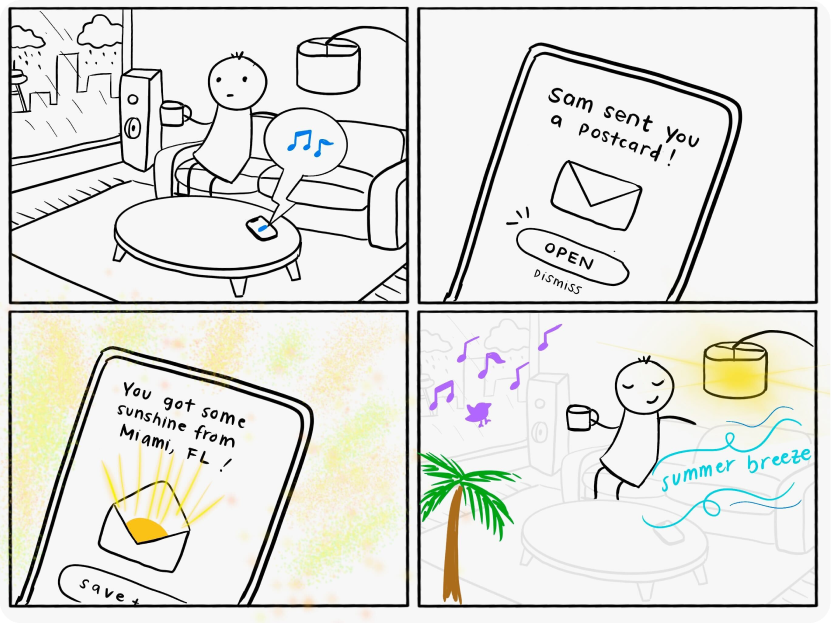
Storyboard 2 with social connection aspect.
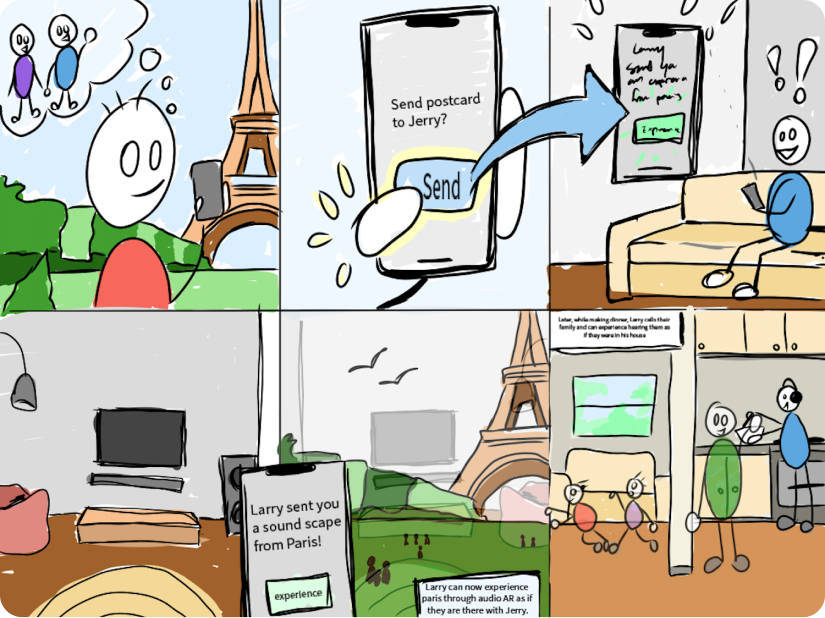
Storyboard 3 with image extraction.
User Flows
From the updated storyboards, I mapped out user flows for the sender and receiver experience to further capture usage possibilities while using EchoScapes.
Building the Solution
Sony EchoScapes is an immersive home entertainment experience that aims to enhance mental and social wellness by creating an immersive ambient environment, grounded in a specific time and place, that can be shared with others.
Our product extracts information (time, weather, location) from an image and translates it into a soundscape that people can experience in their own home.
Our product extracts information (time, weather, location) from an image and translates it into a soundscape that people can experience in their own home.
Key Features
Sound Augmented Reality
From the sound system, audio can play in a 360 fashion and use AR to mimic a real-life environmental space in the user's home. For example, the edge of a living room could play ocean noises that would become quieter as you move away from the space.
Purpose
Sound AR helps reimagine a user's home environment and transports them to a completely different space.
App for Social Connection
Users can send and receive soundscapes based on their location and time. If Person A in California is friends with Person B in Alaska, A could send their sunny and warm weather for B to experience in their home.
Purpose
The importance of connecting with close friends and loved ones was a key sentiment from our research that we wanted to capture. Sending a time and place allows people to live through what their loved ones are experiencing and enables them to connect in a passive, non-intrusive way.

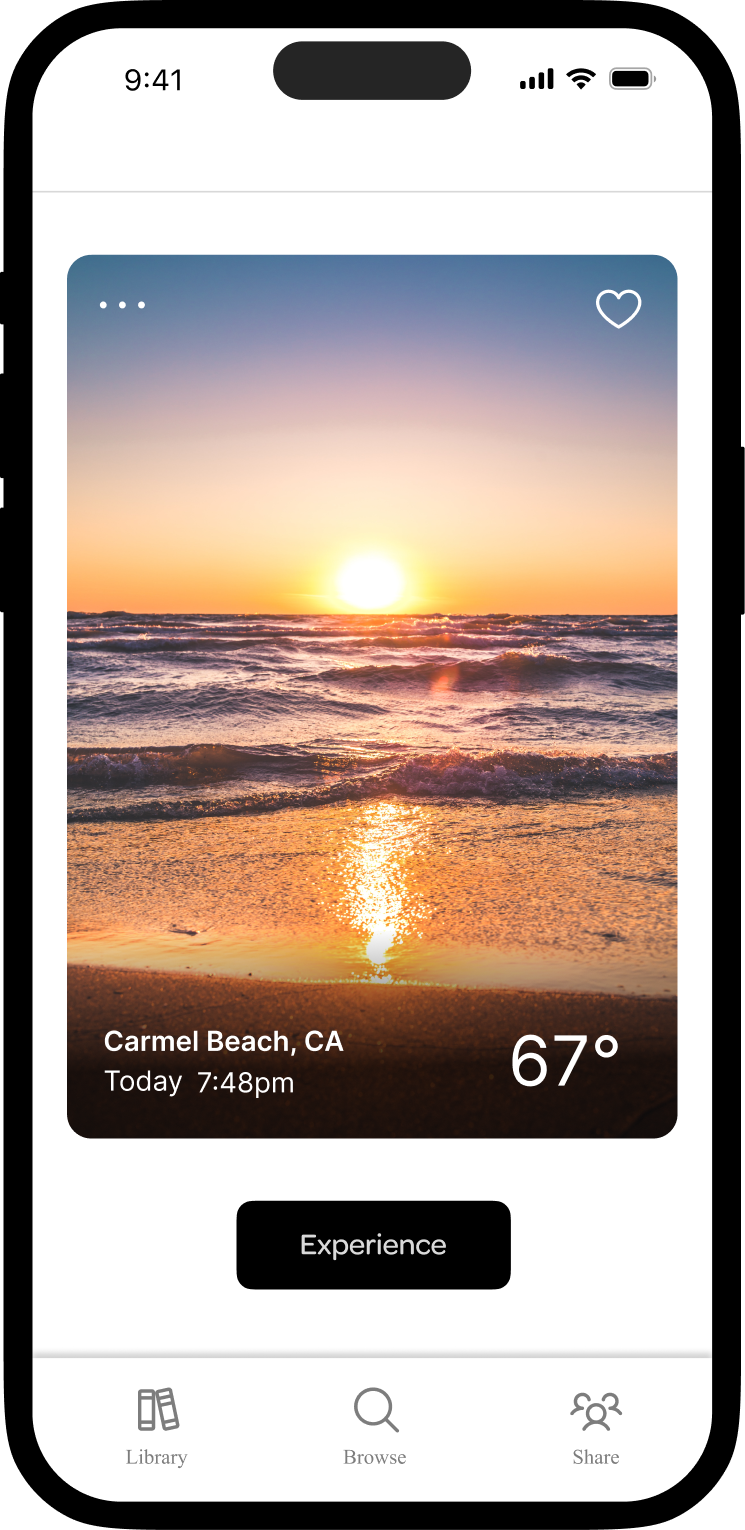
Connected Devices
Our experience intends to connect other non-Sony devices, such as lighting to create a more immersive experience. TV visuals and lighting would match the soundscape location.
Purpose
This feature aims to increase the level of immersion beyond audio and visuals. Many participants in our Co-Design and concept exploration sessions expressed interest in various ways to increase immersion through lighting and other senses.
Storytelling Through Prototypes
As our product is based in a physical space and is more of an interplay between hardware and software, it was challenging to figure out how to showcase our product.
Wizard of Oz Living Room
To solve this problem, we built a Wizard of Oz living room setup. This allowed people to visualize how Sony EchoScapes could be set up in their living space, and experience a sample soundscape.
We used furniture, a Sony TV, Sony headphones, Govee Lights, and beach footage to set the scene. We also created a binaural audio file that mimicked Sound AR for users to feel like the sound is moving depending on how they move throughout the living room.
Video Prototype
Reflection
Be Decisive
Unlike previous course projects, out capstone project was done with little guidance. This encouraged me to call the shots when deciding which research methods to use, choosing a concept, and designing the experience.
Initially, I spent a lot of time exploring our concept through validation sessions to hear about specific features users would want. We eventually had to decide when to stop concept testing sessions and choose the core features we wanted our product to have. Over the course of 6 months, I learned to be decisive in any decisions I made.
Unlike previous course projects, out capstone project was done with little guidance. This encouraged me to call the shots when deciding which research methods to use, choosing a concept, and designing the experience.
Initially, I spent a lot of time exploring our concept through validation sessions to hear about specific features users would want. We eventually had to decide when to stop concept testing sessions and choose the core features we wanted our product to have. Over the course of 6 months, I learned to be decisive in any decisions I made.